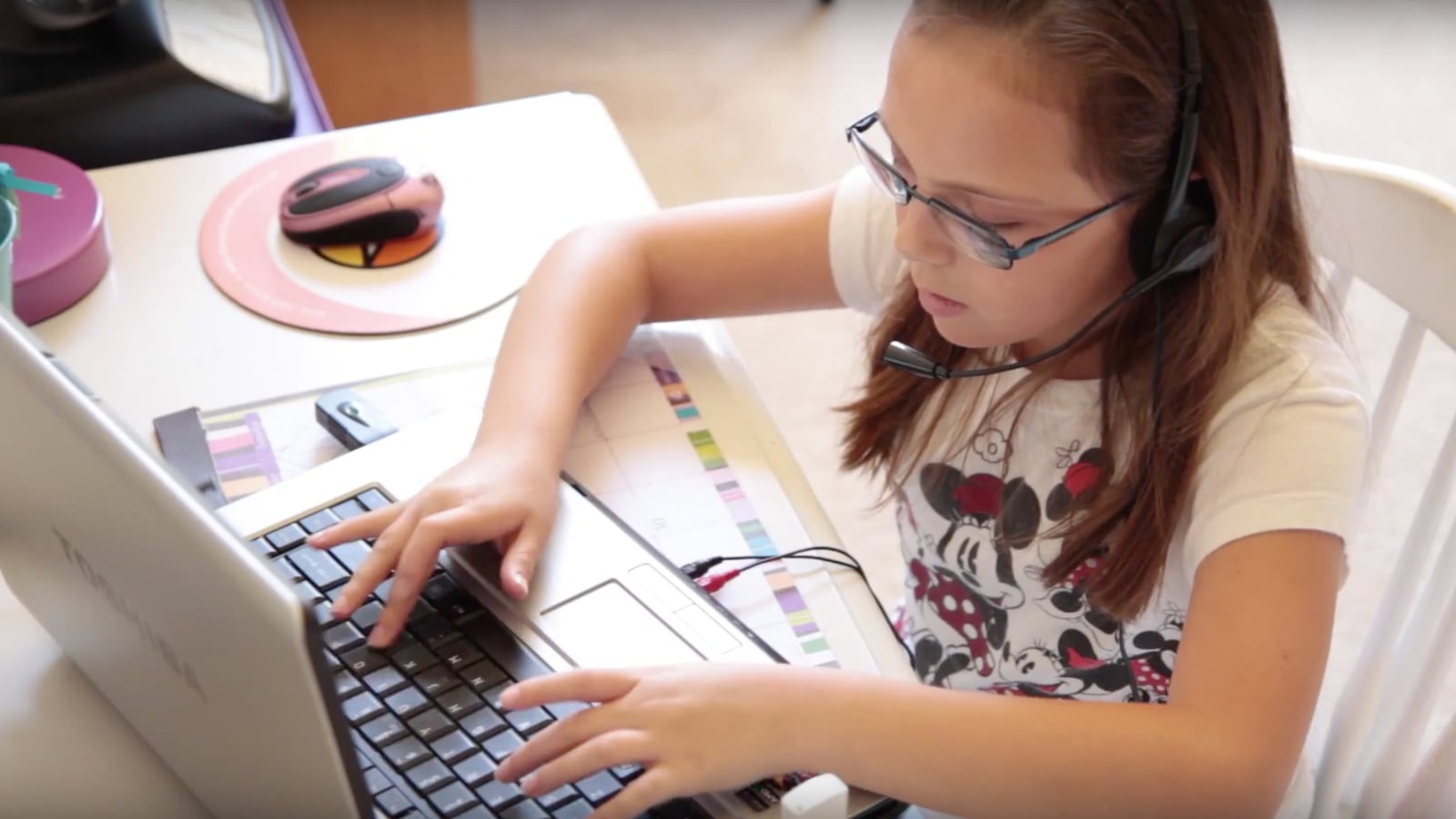Melissa Brown knows her online charter school served — for some length of time — about 6,000 students last year.
Brown, executive director of Indiana Connections Academy, also knows that the state only gave the school enough money for 4,651, the number of students who started the school year there. And she knows about a quarter of the students who finished out last year at Connections won’t be coming back in the fall.
The mobility of students at Brown’s school is typical of many online schools, where students can learn from anywhere without direct supervision. That makes it easier to enroll, drop out, and disengage. And the consequences are real: It’s challenging to educate students who don’t stay long enough to learn, and it’s difficult for the school to garner a positive rating from the state when those same students score poorly on state tests, or don’t take them at all.
“I am absolutely for being held accountable, and I will be as transparent about our data as I need to be because I want help in making our model better,” Brown said. “But I don’t think you can ignore the mobility piece when it comes to accountability.”
Brown plans to explain the challenge mobility presents to state policymakers Wednesday as part of the second meeting of a state committee that aims to review virtual charter school laws and regulations. The committee — formed by the Indiana State Board of Education following calls from Gov. Eric Holcomb and lawmakers to address the schools’ poor performance and oversight — is expected to hear presentations from the Indiana’s online charter school operators and the groups that oversee them. This meeting will look at virtual charter schools’ accountability, enrollment, and withdrawal processes.
Read: 4 takeaways from Indiana’s first review of its troubled virtual charter schools
Virtual charter schools are not alone in their struggle to educate students they might not be funded for. And they’re also not the only schools that are penalized in state letter grades because of students transferring, critics point out. But online charter school leaders do say their student mobility rates outpace those of other public schools and add an additional burden.
In 2017, Indiana reported that 40.7 percent of Connections Academy students changed schools sometime during the year. At Indiana Virtual School, which Chalkbeat investigated last year, 46 percent did. And at the now-closed Hoosier Academy Virtual, the mobility rate was 36 percent. According to a report from the National Association of Charter School Authorizers and the National Alliance of Public Charter Schools, students stay in virtual schools for two years on average.
In Indianapolis Public Schools, by comparison, state data shows mobility between schools was 7.6 percent that year, and 17.5 percent between IPS and other school districts. In suburban Carmel and rural Batesville schools, the rates for both kinds of mobility were below 4 percent.
Out of all the state’s virtual charter schools, Connections has posted the highest test passing rates, test improvement rates, and has the largest share of its students graduating. But for most of those metrics, the school still falls below state averages. The school received an F from the state in 2016 and 2017.
That’s frustrating to Brown, who has seen her students improve and her staff recognized by state and national counseling organizations. Compared to other online charter schools in the state, Connections Academy has more teachers per student, a metric cited by researchers as a way to improve student learning at virtual schools.
The school also received a favorable review from AdvancED, a national nonprofit that ensures schools meet certain standards and best practices. If the school is meeting these criteria, she wonders, why are they performing so poorly on the state’s rating?
“We had these site-reviewers who really dug deeply into our daily practice and operational framework and basically said this is not a failing school,” Brown said. “There’s something wrong in terms of how we’re measuring our kids when we’re doing everything we can and we’re still coming up short.”
Lawmakers have tried to adjust Indiana’s accountability law in the past to account for schools and districts with high student mobility, but the efforts haven’t yet gained traction. There’s debate about whether schools should get a break if they have more transfers and if those policy changes could end up making highly mobile students invisible to the state’s grading system altogether.
Currently, Indiana schools, with the exception of adult high schools, get letter grades based on the same formula that relies mainly on how many students pass state tests, how much they improve each year, and whether they graduate.
Virtual schools gained a little flexibility in 2017 when the Indiana legislature approved a bill allowing them to dismiss students who showed low attendance and poor participation.
Brown testified in favor of the law, and she said it’s been a good tool to let families know what’s at stake before they commit to a virtual school that might not work for them. Like traditional public schools and brick-and-mortar charter schools, online charter schools are required to accept any student who wants to enroll.
“We’re convenient for a lot of families that need a flexible learning environment, but we can’t just be a place where a kid lands because he or she doesn’t want to go to a physical classroom or because they think they just hide and do nothing,” Brown said. “That’s not how we operate here.”
The online charter school committee is set to meet at 1 p.m., Wednesday, at Indiana Government Center South.

